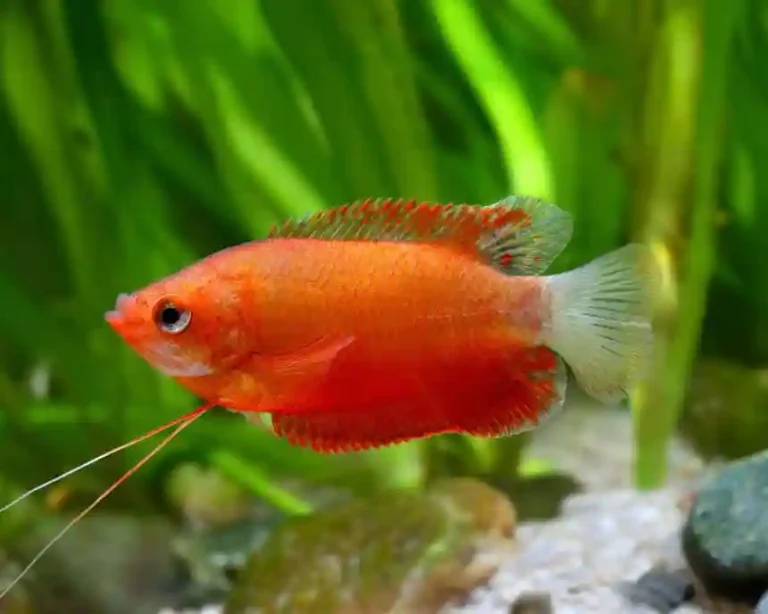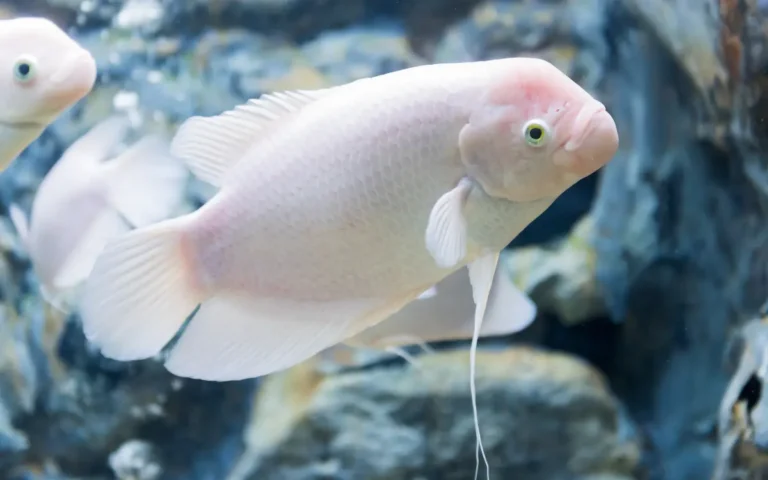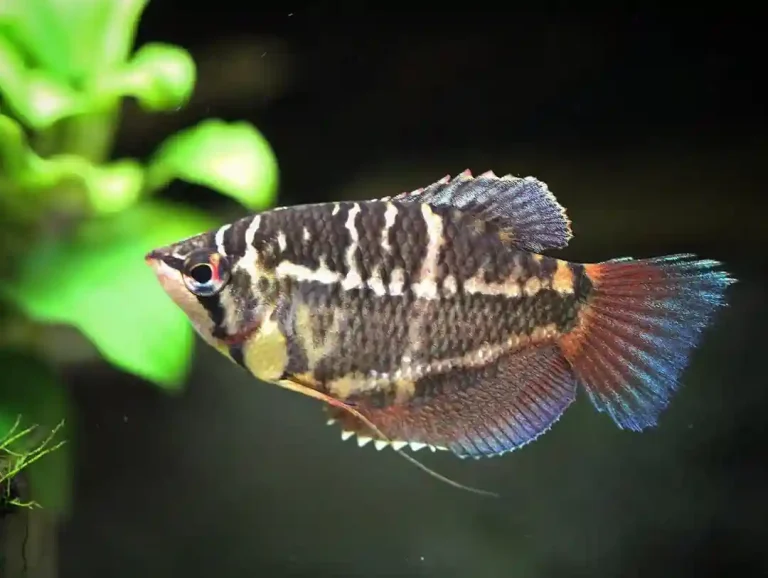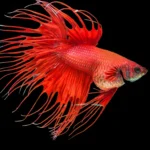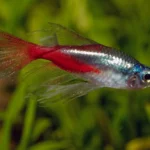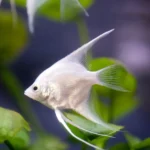Tetras are among the most beloved fish in the aquarium hobby, and for good reason. These small, vibrant freshwater fish bring life and color to any tank while maintaining a generally peaceful temperament that makes them perfect for community setups. With over 700 species available, tetras offer something for every aquarium enthusiast—from beginners to experienced hobbyists.
In this guide, we’ll explore the most popular types of tetras, their unique characteristics, and how to care for them properly. Whether you’re setting up your first tank or looking to add variety to your existing aquarium, this comprehensive overview will help you make informed decisions about which tetras might work best for your setup.
What Makes Tetras Special?
Before diving into specific types, let’s understand what makes tetras such popular aquarium inhabitants:
- Schooling behavior: Most tetras are schooling fish that look spectacular when kept in groups of 6 or more
- Vibrant colors: From the electric blue of neon tetras to the fiery red of serpae tetras
- Compact size: Most species stay under 2-3 inches, making them suitable for various tank sizes
- Hardiness: Many tetra species are adaptable to different water conditions
- Peaceful nature: Most tetras coexist peacefully with other community fish
Popular Types of Tetras
1. Neon Tetra (Paracheirodon innesi)
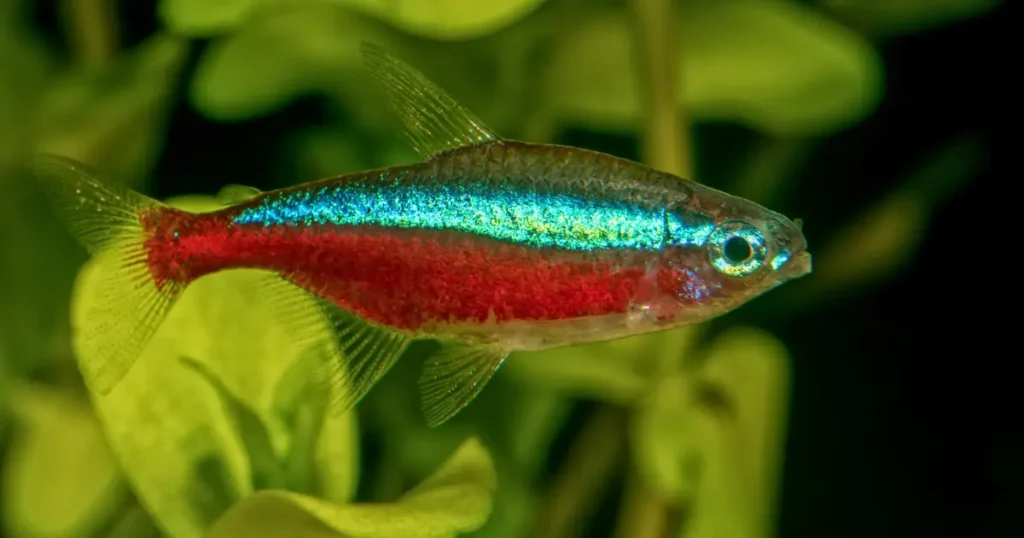
Size: 1-1.5 inches Origin: Amazon Basin, South America Lifespan: 5-8 years
Neon tetras are perhaps the most iconic aquarium fish of all time. Their brilliant blue bodies contrasted with a vibrant red stripe make them instantly recognizable. These small, peaceful fish are perfect for community tanks and look stunning when kept in schools of 10 or more.
Tank Requirements:
- 10+ gallon tank for a school
- Water temperature: 72-78°F
- pH: 6.0-7.0
- Planted aquarium with some floating plants for shade
Care Level: Easy to moderate (sensitive to sudden water parameter changes)
2. Cardinal Tetra (Paracheirodon axelrodi)

Size: 1.5-2 inches Origin: Upper Orinoco and Negro River basins, South America Lifespan: 4-5 years
Often confused with neon tetras, cardinal tetras feature a red stripe that runs the entire length of their body (unlike neons, where it only covers the back half). They’re slightly larger and many aquarists consider them more vibrant than their neon cousins.
Tank Requirements:
- 20+ gallon tank for a proper school
- Water temperature: 74-82°F (prefer warmer water than neons)
- pH: 5.5-7.0
- Heavily planted tank with subdued lighting
Care Level: Moderate (more sensitive to water conditions than neons)
3. Black Neon Tetra (Hyphessobrycon herbertaxelrodi)
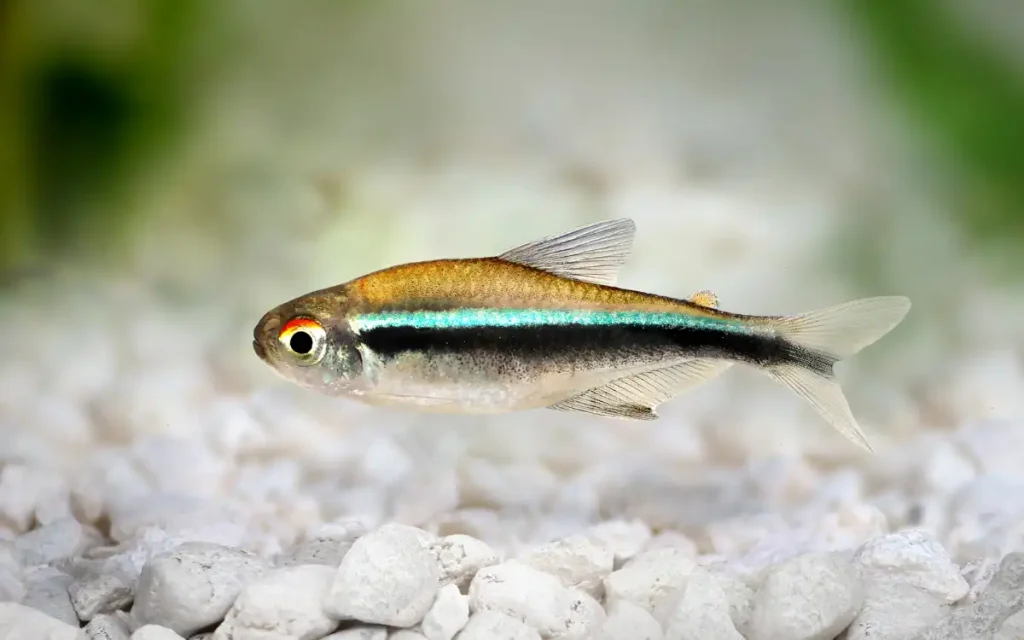
Size: 1.5 inches Origin: Paraguay River basin, Brazil Lifespan: 5 years
Black neon tetras offer a striking contrast to their colorful cousins. Their sleek black bodies feature a shimmering white/silver horizontal stripe topped by a thinner gold or greenish stripe. These hardy fish are excellent choices for beginners.
Tank Requirements:
- 15+ gallon tank
- Water temperature: 72-82°F
- pH: 6.0-7.5
- Moderate planting with open swimming space
Care Level: Easy
4. Rummy-Nose Tetra (Hemigrammus rhodostomus)
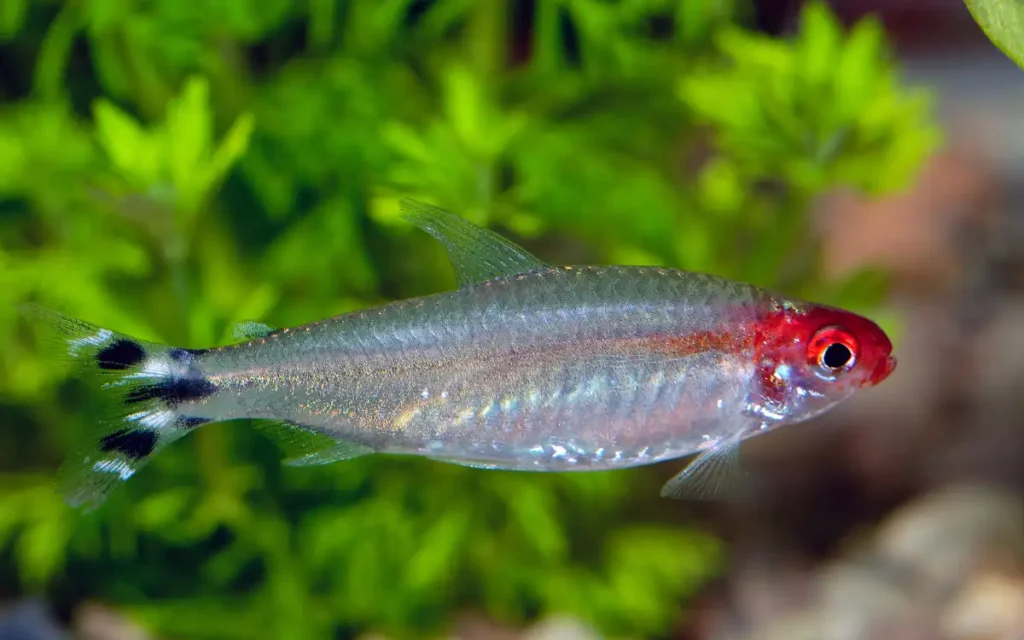
Size: 1.5-2 inches Origin: Amazon River basin Lifespan: 5-6 years
Rummy-nose tetras are known for their bright red “noses” and distinctive black and white striped tails. Interestingly, they serve as excellent water quality indicators—their vibrant red faces fade when water conditions deteriorate.
Tank Requirements:
- 20+ gallon tank
- Water temperature: 75-84°F
- pH: 6.0-7.0
- Well-planted aquarium with some driftwood
Care Level: Moderate (require stable water parameters)
5. Glowlight Tetra (Hemigrammus erythrozonus)

Size: 1.5 inches Origin: Upper Essequibo River, Guyana Lifespan: 4-5 years
Glowlight tetras feature translucent bodies with a striking orange-red horizontal stripe that seems to glow under proper lighting. They’re peaceful, hardy fish that make excellent additions to community tanks.
Tank Requirements:
- 10+ gallon tank
- Water temperature: 74-82°F
- pH: 6.0-7.5
- Moderate planting with some floating plants for shade
Care Level: Easy
6. Ember Tetra (Hyphessobrycon amandae)
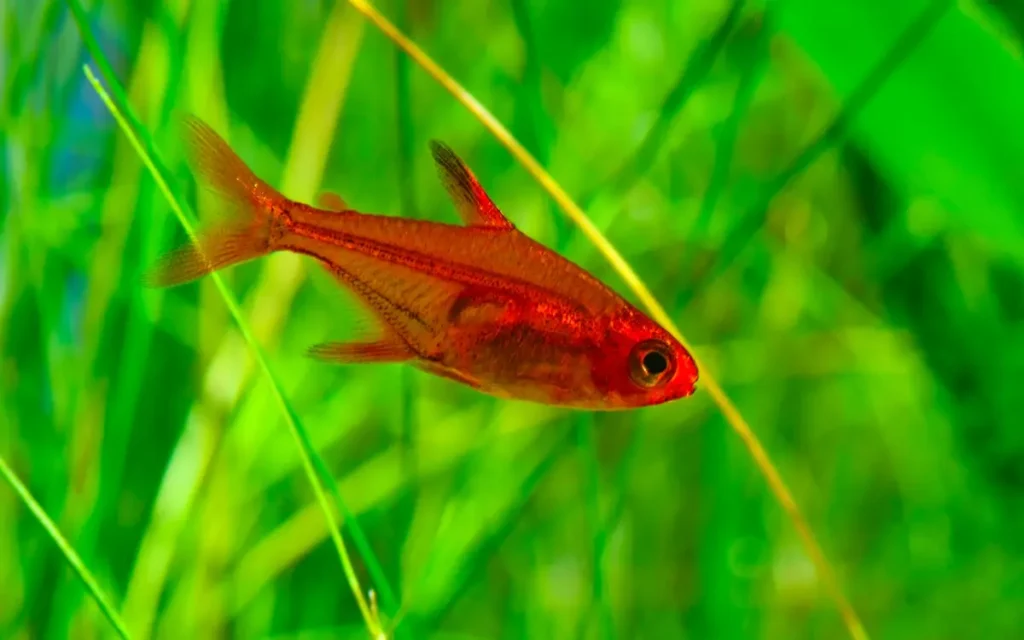
Size: 0.8 inches Origin: Araguaia River basin, Brazil Lifespan: 2-4 years
These tiny, vibrant orange-red fish are among the smallest tetras available in the hobby. Their glowing color resembles embers in a fire, and they’re perfect for nano tanks or as midwater dwellers in larger setups.
Tank Requirements:
- 5+ gallon tank (though 10+ gallons is better for a school)
- Water temperature: 73-84°F
- pH: 6.0-7.0
- Densely planted tank with leaf litter
Care Level: Easy
7. Lemon Tetra (Hyphessobrycon pulchripinnis)

Size: 1.5-2 inches Origin: Amazon River basin, Brazil Lifespan: 6-8 years
Lemon tetras get their name from their translucent yellow bodies that resemble the color of lemon juice. Males develop more intense coloration and taller dorsal fins than females. Their subtle beauty and peaceful nature make them excellent community fish.
Tank Requirements:
- 15+ gallon tank
- Water temperature: 72-82°F
- pH: 6.0-7.5
- Moderate planting with open swimming areas
Care Level: Easy
8. Serpae Tetra (Hyphessobrycon eques)

Size: 1.5-1.75 inches Origin: Amazon and Paraguay River basins Lifespan: 5-7 years
With their bright red bodies and distinctive black spot behind their gills, serpae tetras add a bold splash of color to aquariums. While beautiful, they can be nippy with slow-moving, long-finned fish, so choose tankmates carefully.
Tank Requirements:
- 20+ gallon tank
- Water temperature: 72-80°F
- pH: 5.5-7.5
- Well-planted edges with open swimming space in the middle
Care Level: Easy
9. Congo Tetra (Phenacogrammus interruptus)

Size: 3-3.5 inches Origin: Congo River basin, Africa Lifespan: 5-8 years
Unlike most tetras that originate from South America, Congo tetras come from Africa. They’re larger than typical tetras and feature iridescent bodies that shimmer with blues, purples, and oranges. Males develop long, flowing fins that make them particularly striking.
Tank Requirements:
- 30+ gallon tank (due to their larger size and activity level)
- Water temperature: 73-82°F
- pH: 6.0-7.5
- Open swimming space with plants along the edges
Care Level: Moderate
10. Black Skirt Tetra (Gymnocorymbus ternetzi)
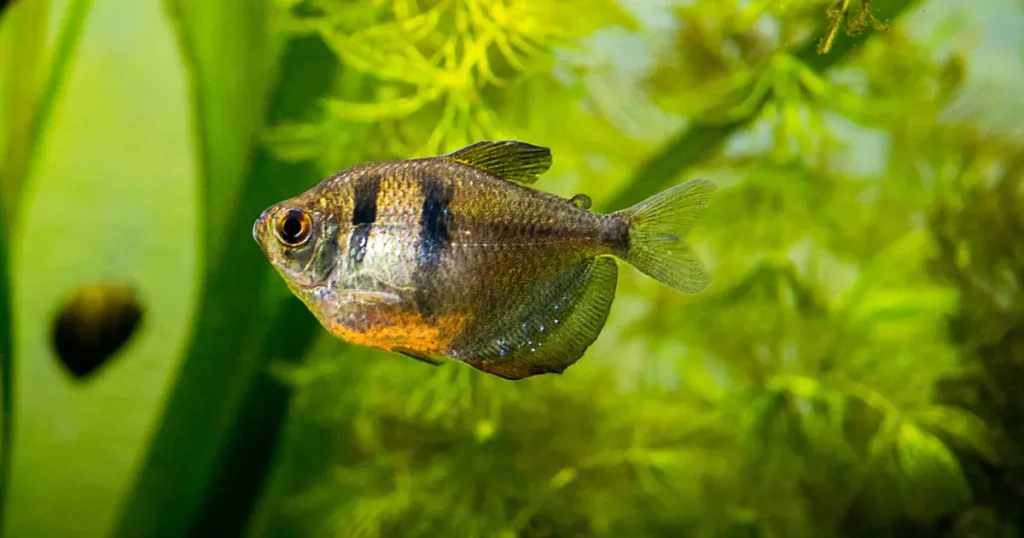
Size: 2-2.5 inches Origin: Paraguay and Brazil Lifespan: 5-7 years
Black skirt tetras are distinctive for their tall, diamond-shaped bodies and flowing black fins that resemble a skirt. They’re hardy, adaptable fish that make excellent choices for beginners. Albino and long-finned varieties are also popular in the hobby.
Tank Requirements:
- 20+ gallon tank
- Water temperature: 70-85°F
- pH: 6.0-7.5
- Mix of plants and open swimming space
Care Level: Easy
Less Common But Beautiful Tetras
While the tetras above are commonly available in the hobby, several less common species deserve attention for their unique beauty:
11. Diamond Tetra (Moenkhausia pittieri)
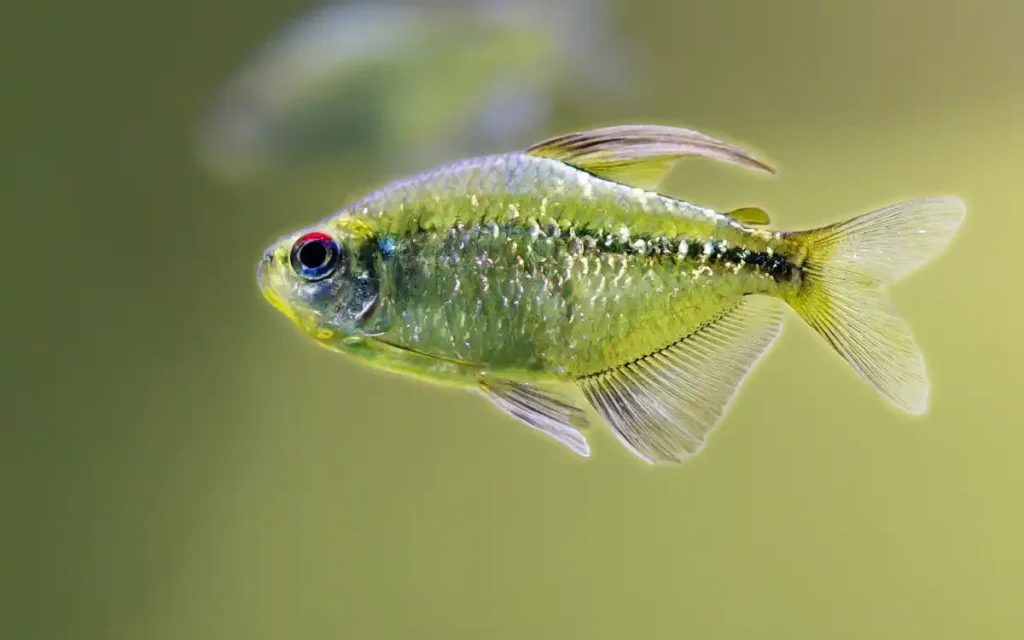
Size: 2.5 inches Origin: Venezuela Notable Feature: Diamond-like scales that reflect light beautifully
12. Bleeding Heart Tetra (Hyphessobrycon erythrostigma)
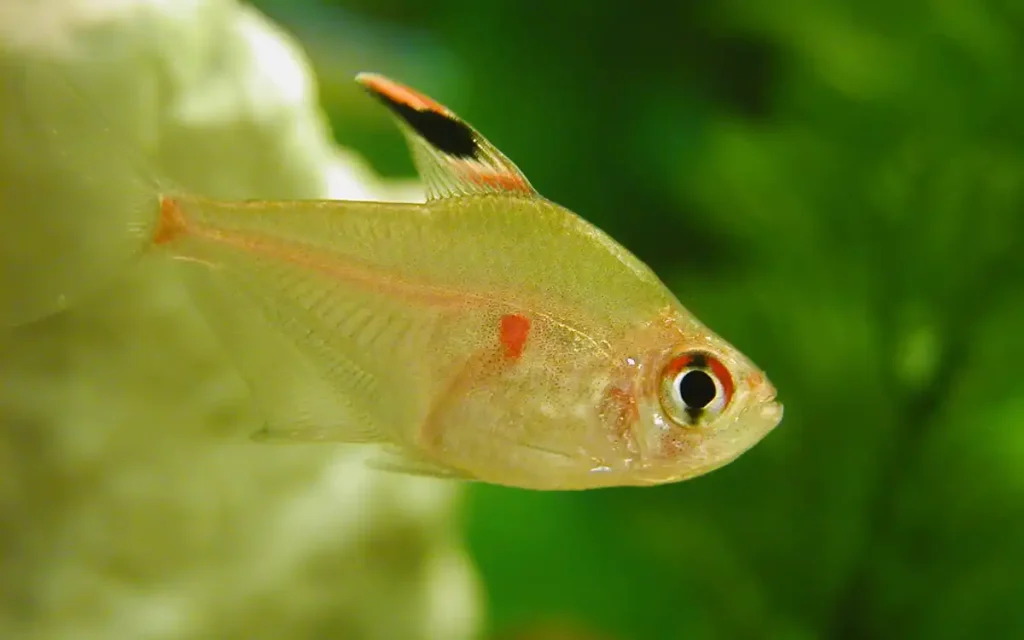
Size: 2.5-3 inches Origin: Upper Amazon basin Notable Feature: Red spot on the side of the body resembling a bleeding heart
13. Emperor Tetra (Nematobrycon palmeri)
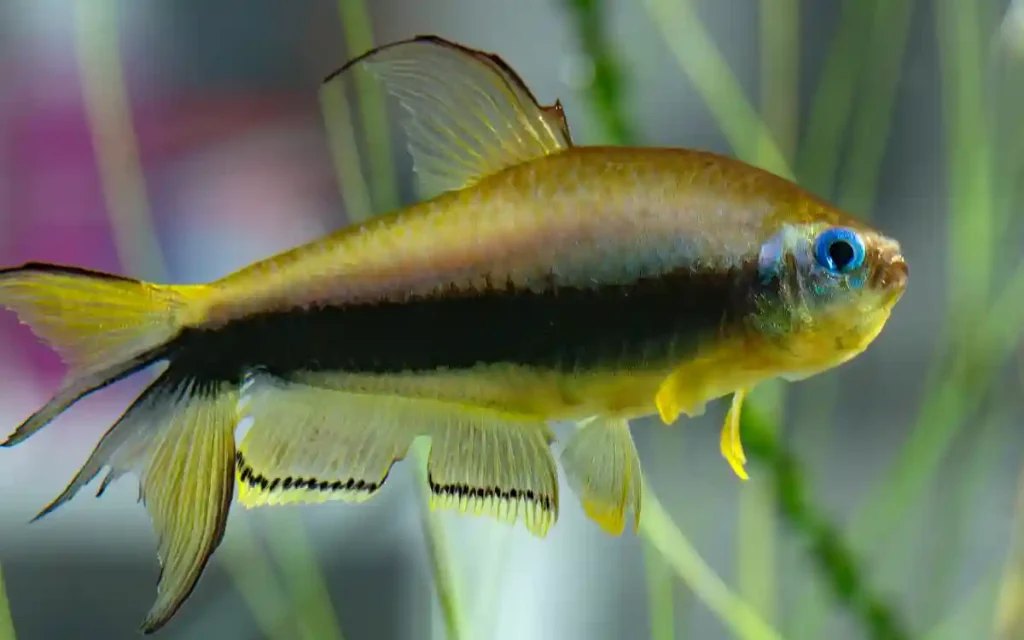
Size: 2 inches Origin: Colombia Notable Feature: Males have a pointed tail extension and display an imperial purple hue
Tetra Care: Essential Tips for Success
Proper Tank Setup
Creating the right environment for tetras involves:
- Tank size: While some nano species can thrive in 5-10 gallon tanks, most tetras prefer at least 20 gallons to school properly
- Filtration: Gentle to moderate flow (most tetras come from slow-moving waters)
- Substrate: Dark substrate often helps tetras display their best colors
- Plants: Live plants provide shelter and make tetras feel secure
- Hiding places: Driftwood, caves, and dense vegetation offer refuge
Water Parameters
Most tetras prefer slightly acidic to neutral water conditions:
Parameter Ideal Range for Most Tetras Temperature 74-80°F (23-27°C) pH 6.0-7.0 Hardness Soft to medium (5-15 dGH) Ammonia 0 ppm Nitrite 0 ppm Nitrate <20 ppm
Feeding Tetras
Tetras are omnivores that accept a variety of foods:
- Staple diet: High-quality flake or micro-pellet food
- Protein supplements: Frozen or live foods like daphnia, brine shrimp, and bloodworms
- Vegetable matter: Spirulina flakes or blanched vegetables for some species
- Feeding schedule: Small amounts 1-2 times daily (what they can consume in 2-3 minutes)
Common Health Issues
Watch for these potential health problems:
- Ich (White Spot Disease): Appears as white salt-like spots on the body and fins
- Fin rot: Deteriorating or frayed fins, often with inflammation at the base
- Neon Tetra Disease: Progressive loss of color, difficulty swimming, and curved spine (no known cure)
Prevention is key: Maintain clean water conditions through regular water changes (25% weekly), proper filtration, and avoiding overcrowding.
Setting Up a Tetra Community Tank
Ideal Tank Mates
Tetras generally thrive with:
- Other peaceful community fish of similar size
- Bottom dwellers like Corydoras catfish
- Peaceful dwarf cichlids (in larger tanks)
- Small rasboras and danios
- Peaceful gouramis
Fish to Avoid
Tetras may be stressed or eaten by:
- Large, aggressive cichlids
- Fast, boisterous barbs (some species)
- Large gouramis
- Predatory fish like cichlids and larger angelfish
- Aggressive bottom dwellers like certain loaches
Sample 20-Gallon Tetra Community Setup
Here’s an example of a well-balanced 20-gallon tetra community:
- 12 Neon Tetras (midwater)
- 6 Corydoras Catfish (bottom)
- 1 Honey Gourami (top/middle)
- Live plants (Amazon swords, Java fern, Anubias)
- Driftwood centerpiece with attached plants
- Fine gravel or sand substrate
Breeding Tetras
Many tetras can be bred in home aquariums, though some species are more challenging than others. Here’s a basic approach that works for many tetra species:
- Setup a breeding tank: 10-gallon tank with sponge filter, dim lighting
- Condition the breeders: Feed high-protein foods for 1-2 weeks
- Water parameters: Slightly acidic (pH 6.0-6.5), very soft water
- Spawning trigger: Often a water change with slightly cooler water
- Egg protection: Add spawning mops or dense fine-leaved plants, or use a mesh at the bottom (parents may eat eggs)
- Fry care: Feed infusoria, commercial fry food, or powdered dry food initially, then baby brine shrimp as they grow
Conclusion
Tetras represent one of the most diverse and rewarding groups of fish in the aquarium hobby. From the iconic neon tetra to the majestic Congo tetra, these fish offer vibrant colors, interesting behaviors, and generally peaceful temperaments that make them perfect for community tanks of various sizes.
When kept in proper schools, in well-maintained aquariums with appropriate tank mates, tetras will reward you with years of colorful, active displays. Whether you’re just starting your first aquarium or are an experienced hobbyist looking to try something new, there’s likely a tetra species that’s perfect for your setup.
Remember that the key to success with tetras—as with all aquarium fish—is research, patience, and consistent maintenance. Take the time to understand the specific needs of the tetra species you’re interested in, and you’ll be rewarded with a thriving, colorful community that brings life and movement to your home or office.
FAQs
How many tetras should be kept together?
Most tetras are schooling fish and should be kept in groups of at least 6, though 8-12 makes for a more impressive display and helps the fish feel secure.
Can different tetra species be kept together?
Yes, many tetra species can be housed together successfully, especially if they occupy slightly different levels of the water column. Just be aware that some more boisterous species (like serpae tetras) might nip at slower-moving species.
Why are my tetras hiding all the time?
Tetras hide when they feel threatened. This could be due to bright lighting, lack of hiding places, too few tankmates of their own species, or inappropriate tank mates. Adding more of the same species often solves this problem.
How can I make my tetras’ colors more vibrant?
Provide a dark substrate, add tannins to the water (from driftwood or Indian almond leaves), use quality lighting, feed a varied diet rich in natural color enhancers, and maintain excellent water quality.
Are tetras good fish for beginners?
Many tetra species (like black skirt tetras, pristella tetras, and glowlight tetras) are excellent choices for beginners due to their hardiness and adaptability. Some species

